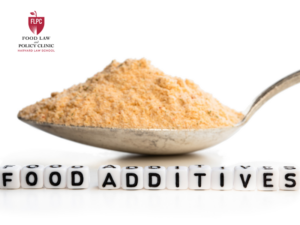Written by Tammuz Huberman, student in the Food Law and Policy Clinic, Fall 2017
 Let’s say you’re a health-conscious consumer at the grocery store deciding on a beverage to purchase. Maybe you glance at the familiar “Nutrition Fact” panels on food and beverage packages to help you decide what to buy. Bottled water displays zero calories, a can of Coke shows 150 calories, and the average protein shake about 250 calories. Wine? Beer? You’re out of luck: most alcoholic beverages are not required to display nutrition or ingredient information. This makes them virtually the only ingestible consumer products not required to disclose comprehensive product identity or quality information.
Let’s say you’re a health-conscious consumer at the grocery store deciding on a beverage to purchase. Maybe you glance at the familiar “Nutrition Fact” panels on food and beverage packages to help you decide what to buy. Bottled water displays zero calories, a can of Coke shows 150 calories, and the average protein shake about 250 calories. Wine? Beer? You’re out of luck: most alcoholic beverages are not required to display nutrition or ingredient information. This makes them virtually the only ingestible consumer products not required to disclose comprehensive product identity or quality information.
While the Food and Drug Administration (FDA) instated mandatory labeling rules requiring use of a standard Nutrition Facts Panel and ingredient list, among other things, following the passage of the National Labeling and Education Act of 1990, alcohol is strangely regulated by a different agency – the Department of Treasury’s Alcohol and Tobacco Tax and Trade Bureau (TTB). TTB oversight of alcohol traces back to the Federal Alcohol Administration Act, passed by Congress in 1935 following the end of the Prohibition Era. Recognizing the tax revenue potential of alcoholic beverages, Congress assigned their regulation to the Treasury Department rather than the FDA. TTB has not adopted a comprehensive labeling regime akin to the FDA’s; as a result, alcoholic beverages fail to provide much in the way of product identity or quality information beyond alcohol content disclosures.
There is a simple fix for this regulatory gap: TTB should require alcoholic beverages to display nutritional and ingredient information in a simplified version of a fact panel, akin to “Nutrition Facts.” This isn’t a tall order: TTB has undertaken approximately six rulemaking and comment periods on the matter since the 1970s; in the most recent proposed rulemaking in 2007, TTB came around to the wisdom of comprehensive labeling and proposed a required comprehensive labeling regime for alcoholic beverages. In fact, the model TTB proposed in 2007 was pretty sensible and reflected reasonable compromise for both industry and consumer advocacy groups. With the brunt of the legwork of a final rule completed, the reason for the 10-year delay in issuing a final rule is not clear—though TTB has suggested it is still in the process of reviewing public comments submitted in 2007.
Recent FDA developments make the present a great opportunity for TTB to act. In 2016, the FDA updated Nutrition Facts with substantive and design changes to ensure consumers are provided with scientifically updated and relevant information in an easily accessible format. TTB should follow the FDA’s lead and issue a final rule for mandatory comprehensive “Alcohol Facts” labels to assist consumers in making complementary and fully informed food and beverage choices. TTB’s label should be mandatory for all alcoholic beverages under TTB oversight, uniform with respect to design, and include reference serving sizes, servings per container, calories, alcohol content, a moderate drinking statement, and ingredient disclosures.
People should not have to guess the health implications of what they put into their bodies. This is an unequivocal norm when it comes to food. Alcohol should be treated no differently given America’s well-documented obesity crisis and research that firmly establishes the addictive and dangerous qualities of alcohol. TTB has an opportunity to correct a regulatory gap in food and beverage labeling, utilize a powerful and proven public health tool, and empower consumers by helping close information asymmetries with respect to ingestible consumer products.


Food Law & Policy, Commentary
Policy to Reduce Methane Emissions and Feed More People
April 3, 2025